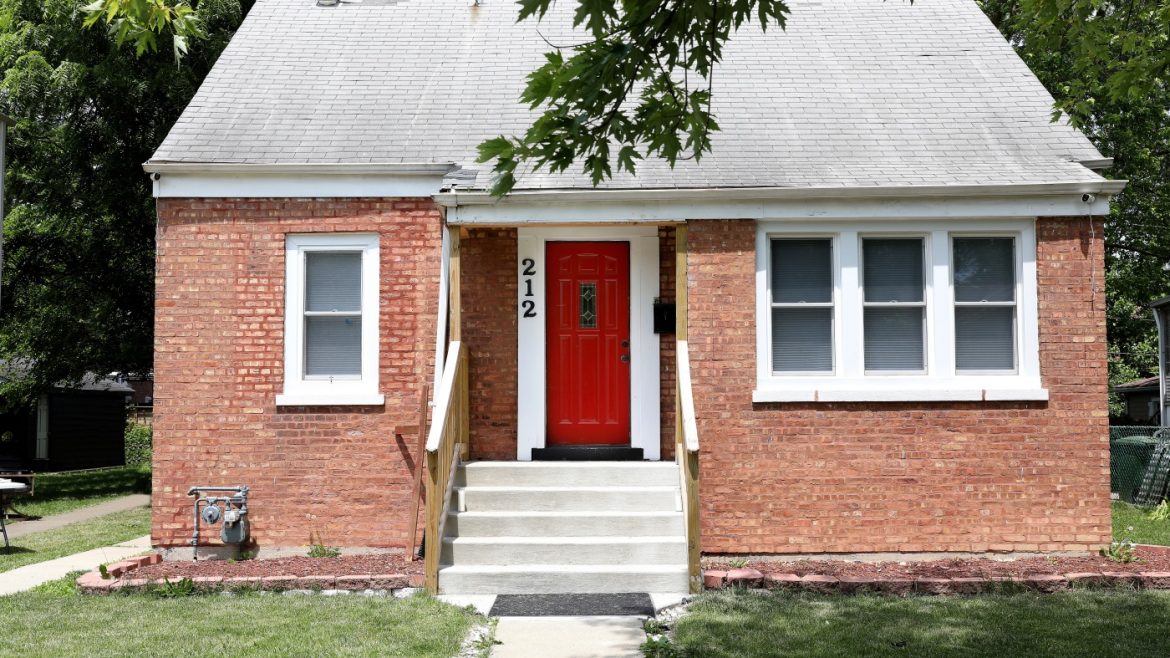Dolton, Illinois, a suburb nestled south of Chicago, stands at a pivotal moment in its history. Plagued by scandals and economic stagnation, the village is making a daring bet on an unlikely asset: the childhood home of Pope Leo XIV. The Board of Trustees has unanimously voted to acquire the modest brick house where the first American Pope spent his formative years, envisioning its transformation into a historic site. This ambitious plan raises critical questions about historical preservation, economic revitalization, and the role of a town’s past in shaping its future.
A Town Seeking Redemption
Dolton’s struggles are well-documented, with headlines frequently labeling it as a “scandal-plagued hometown.” While the specifics of these scandals remain undisclosed, their impact is undeniable. The town finds itself at a crossroads, desperate for a narrative shift that can overshadow its current challenges. The decision to pursue Pope Leo XIV’s childhood home is more than a real estate transaction; it is a strategic move to rebrand Dolton, associating it with the global significance and positive image of the papacy. This bold gamble aims to redirect attention from the town’s present difficulties to a potentially inspiring past, offering residents and visitors alike a reason for hope.
The Power of Papal Legacy
The election of an American Pope is a historic milestone, and Dolton’s connection to Pope Leo XIV provides the village with a unique and powerful narrative. The idea of turning his childhood home into a historic site capitalizes on humanity’s enduring fascination with historical figures and their origins. This initiative promises to attract tourists, generate revenue, and instill a sense of local pride. The fact that Pope Leo XIV chose his papal name in honor of Pope Leo XIII, known for his advocacy of social justice, adds another layer of significance. This association aligns the new Pope with a legacy of championing the rights of ordinary people, a message that resonates deeply with Dolton’s residents.
The House on 141st Place: A Symbol of Humble Beginnings
The house in question, located at 212 E. 141st Pl., is a modest Cape-Cod-style brick home. Its listing price was $219,000 shortly after Pope Francis’ death, a reflection of its unassuming nature. The house’s ordinariness is precisely what makes it appealing, serving as a tangible link to Pope Leo XIV’s humble beginnings. With three bedrooms and two bathrooms, the house offers a glimpse into the living conditions of a typical American family during the era when the future Pope grew up. This intimate scale makes the site relatable and engaging for visitors, offering a personal connection to history.
Challenges and Opportunities
While the vision of a revitalized Dolton centered around Pope Leo XIV’s childhood home is compelling, several challenges must be addressed. The village’s plan to acquire the property through eminent domain is controversial and carries the risk of legal battles and negative publicity. Additionally, transforming the house into a viable historical site will require significant investment. Dolton must secure funding for renovations, staffing, marketing, and ongoing maintenance. Collaboration with organizations like the Archdiocese of Chicago could be crucial in this regard.
Community engagement is another critical factor. The success of the project will depend on the support of local residents. Dolton must involve its community in the planning process, ensuring that the historical site serves their needs and aspirations. Despite these challenges, the potential rewards are substantial. A well-managed historical site could attract tourists, create jobs, enhance Dolton’s image, and foster community pride. The transformation of a simple brick house into a source of hope and pride could be the miracle that this scandal-plagued hometown so desperately needs.
Building a Lasting Legacy
The acquisition of Pope Leo XIV’s childhood home is just the first step in Dolton’s revitalization journey. To fully capitalize on this opportunity, the village must develop a comprehensive strategy that extends beyond the physical structure. This strategy should include educational programs that tell the story of Pope Leo XIV’s life, his connection to Dolton, and his contributions to the Catholic Church. Community partnerships with local schools, churches, and organizations can create events and activities that celebrate Dolton’s unique history.
Marketing and promotion are also essential. Dolton must develop a campaign that targets potential visitors and promotes the town as a destination for historical and cultural tourism. Infrastructure improvements, such as better transportation and accommodation options, will support the influx of visitors. By embracing its unique connection to Pope Leo XIV, Dolton can create a lasting legacy that preserves the past while shaping a brighter future for its residents.
A Hopeful Future
Dolton’s decision to pursue Pope Leo XIV’s childhood home is a bold and ambitious move. It represents a gamble on the power of history, the allure of the papacy, and the potential for a small town to reinvent itself. While the challenges are significant, the rewards could be transformative. By embracing its papal past, Dolton has the opportunity to create a lasting legacy, one that not only preserves history but also shapes a brighter future for its residents. The transformation of a simple brick house into a source of hope and pride could be the miracle that this scandal-plagued hometown so desperately needs. The path forward may be fraught with obstacles, but the vision of a revitalized Dolton, drawing strength from its papal past, is a testament to the enduring power of hope and the unexpected ways in which history can shape our destinies.


